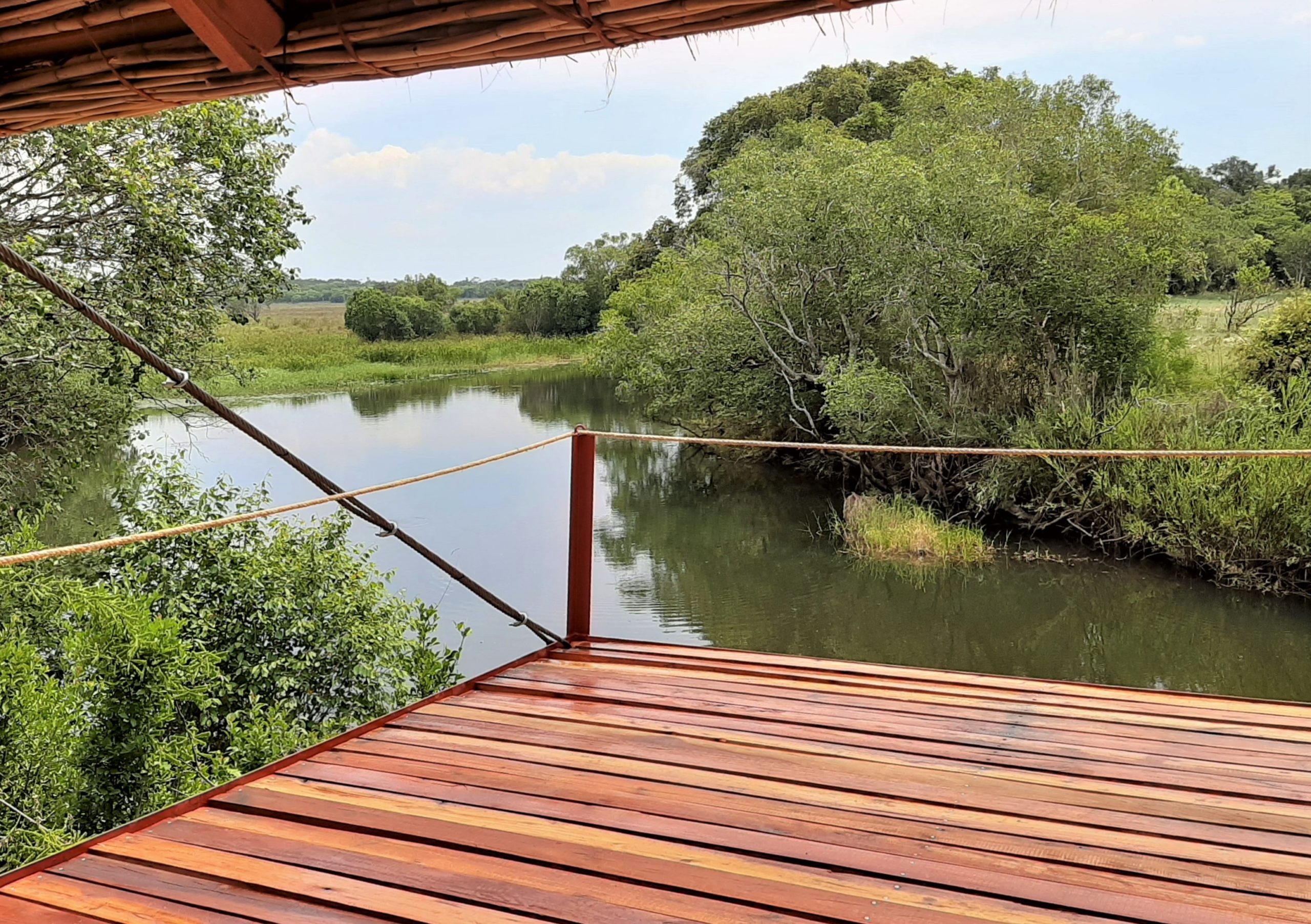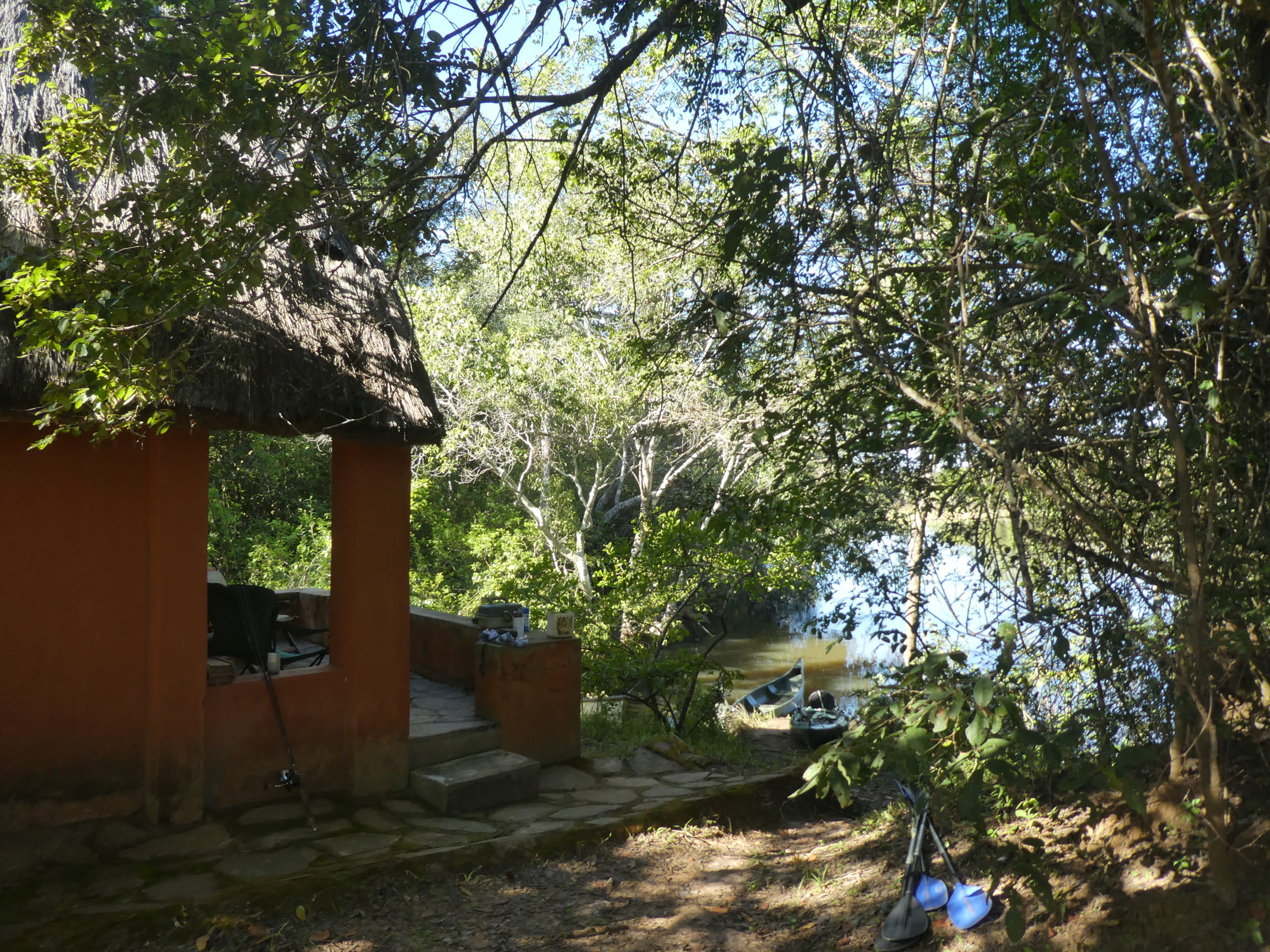Kasanka National Park is one of Zambia’s smallest national parks, but one of its many hidden treasures. What this peaceful little park on the southwestern edge of the Lake Bangweulu basin lacks in size, it makes up for in diversity…

We are in canoes, paddling up the Luwombwa River in Kasanka National Park. Two canoes, with two adults and one small boy per canoe. There’s a little bit of rivalry as to which canoe is moving fastest, admittedly this is mostly on my part. With my husband in the back only pretending to paddle and the small boy in the middle more interested in the fish that he can see below the surface, I’m actually the only one doing any work! We aren’t making great progress! The canoe behind us gets closer, threatening to overtake. I paddle harder. My husband suddenly decides that this is an opportune moment to get involved, and sticks his paddle in the water sending us off course and straight into some low hanging branches. By the time we extract ourselves the other canoe has overtaken us, much to the delight and amusement of both the small boys! I have to resign myself to second place, before realising that it doesn’t really matter after all, because the scenery is so beautiful. It’s a perfect afternoon.
A Picturesque Paddle in Kasanka
We paddle on. Pairs of pied kingfishers hover above the water before diving in to catch their prey. Emerging triumphant with tiny silver slivers in their beaks, they fly to a branch to devour these morsels before returning to the air, hovering once again. Bee-eaters and pigeons fly past us, herons and jacanas wade near the banks, a flock of grey turacos hop about noisily in the trees above, and a tiny malachite kingfisher flits through the reeds, a tiny bright flash of colour. We see the paths where hippos and elephants had come down to cross the river. We startle a puku in the undergrowth as we paddle past.
Turning around we head back downstream to the camp. It’s much more easy-going as we flow with the water, and barely need to paddle at all. My husband grabs the opportunity to fish from the canoe, the most active he’s been all afternoon! With minimal effort we arrive back at camp in time for sundowners, swiftly followed by dinner and the toasting of marshmallows by the fire. The small boys are tired from a beautifully busy day and need to get to bed.

Kasanka National Park, at roughly 390km², is one of Zambia’s smallest national parks, but one of its many hidden treasures. What this peaceful little park on the southwestern edge of the Lake Bangweulu basin lacks in size, it makes up for in diversity. With rivers, lakes, wetlands, forests and dambos, the park is picturesque, and with an incredible 480 bird species and 114 mammals, there is a lot for you to see. From the famous fruit bat migration, the secretive semi-aquatic sitatunga, and special birds like the Pells fishing owl, beautiful Ross’s turaco and Böhm’s bee-eater, Kasanka supports a uniquely wide range of animals and abundant birds and fish. The Blue Monkey (a species of Old World monkey native to Central and East Africa) and the Kinda Baboon (only found in Angola, the DRC and Zambia), both unique and special primates, also call Kasanka home, giving you an excellent opportunity to add two new species to your primate list. Don’t come to Kasanka expecting to see large herds of animals around every corner, but it is definitely one of the most picturesque parks in Zambia.
Exploring Zambia’s Smallest Hidden Gem
An early morning game drive through the park the next day was beautiful. We found puku by the score, numerous bushbuck, several sitatungas, a beautiful female puku nursing her young, and even a lonely black lechwe trying to blend in amongst the puku. We saw plenty of signs of elephants, from deposits of dung to uprooted and mangled trees, although no sign of the perpetrators. A visit to Vivienne’s Hide revealed many more sitatunga, one of which, (a male), made a persistent, loud, barking cough, clearly claiming his territory – rather reminding me of a ‘covid cough’!
WATCH: Kasanka Bat Season 2020
Later in the day, while the ‘menfolk’, big and small, were doing whatever it is that menfolk do when left to their own devices, us two ‘ladies’ went for a cycle. It was hot, and probably not the best time for a cycle, but I have a terrible fear of missing out and didn’t want to waste the opportunity to see the park in a way I hadn’t done on any of my previous visits. Fortunately, my riding companion was stoic and far too polite to complain as we cycled through the dust and the heat for about an hour and a half. We weren’t alone, but were accompanied by a guide and an armed scout, just in case we got lost, or perhaps attacked by some wild creature whose siesta we might disturb. As it was midday we actually didn’t see much in the way of wildlife which would sensibly have been resting in the shade and not madly peddling around in the midday heat like us! Our guide did tell us that multi-day cycling/camping trips through the park are planned within Kasanka, and I wouldn’t mind signing up for one of those in the future. With 18km under our belts, we arrived back at camp in time for a cold drink and a well-earned nap!

Luwombwa Camp, in the western part of Kasanka, is probably my favourite place to stay in the park. It’s pretty remote and about an hour’s drive from the main lodge at Wasa. It’s also located beside the permanent Luwombwa River, which is ideal for canoeing, fishing and just relaxing. It’s a very simple camp: no electricity, no phone signal, no WiFi, and you need to request your hot showers in advance; so don’t come expecting luxury. But it’s a good place to come for peace and quiet, and to enjoy being in the bush and away from civilisation for a while. Something else to remember: by visiting Kasanka, you are making a direct contribution to the conservation of this wonderful landscape and the special creatures that call it home.
Writer: Sarah Kingdom

Leave A Comment